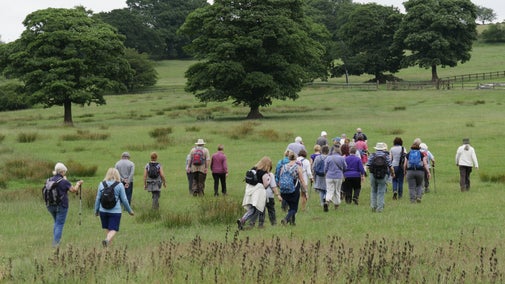The origins of Lyme – the making of a myth
The story of Lyme begins at the Battle of Crécy in 1346, during the Hundred Years War between England and France. Thomas Danyers helped to save Edward III’s son, the Black Prince, from attack and rescued the royal standard. As a reward, he was promised a piece of land. This was granted to his grand-daughter Margaret and her husband Piers Legh I in 1398. The first house that was built here was used for nearly 200 years as a secondary residence.
This founding story of Lyme was told and retold to assert the Leghs' aristocratic pedigree over the centuries. Peppered throughout the house are references to this tale such as a portrait of the Black Prince in the Entrance Hall and a heraldic distinction granted by Queen Elizabeth I, a severed arm holding the standard, which can be found in many of the rooms.
Development of the present house
Lyme has been designed on a grand scale, with changes and additions by successive generations.
In the Tudor times, it was Sir Piers Legh VII who decided to make Lyme his main family home. The Elizabethan house that forms the core of the present house was built for him in the late 1500s.
Peter Legh XII transformed the house into a Georgian mansion in the 1720s-30s. He commissioned the Italian architect Giacomo Leoni, who designed the courtyard and the iconic south front in the Italian Renaissance style (Well over 200 years later, the view of the south front became famous as the exterior of Pemberley, Mr Darcy’s home in the BBC’s Pride and Prejudice.)
In the early 1800s Thomas Legh commissioned Lewis Wyatt to further overhaul the house. Wyatt was conscious of the ancient English origins of the house and family, and gave prominence to these in his interior decoration.
The last Leghs of Lyme
The first world war changed everything, not just because so few men returned from the trenches but because of the sweeping social changes it ushered in. During this period the landed gentry were faced with rising tax bills and declining farm rents and for the Leghs the nationalisation of mineral rights in 1939 stripped them of income from their collieries. In 1946, The 3rd Lord and Lady Newton, Richard and Helen, left Lyme to the as we know it today to the National Trust for the health, education and delight of the people of Stockport.













